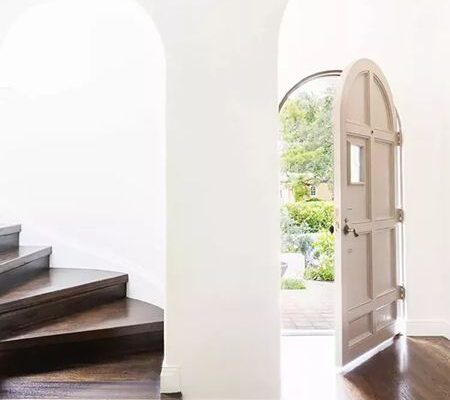20 Factors: Choose the Perfect Range Hood
A range hood, also referred to as a kitchen hood or exhaust hood, is a vital appliance installed above the cook top or range in a kitchen. Its primary purpose is to eliminate smoke, steam, grease, and cooking odors, thereby improving air quality and creating a clean and pleasant cooking environment. Choosing the perfect range hood ensures optimal performance in removing these airborne pollutants, allowing for a more enjoyable cooking experience.
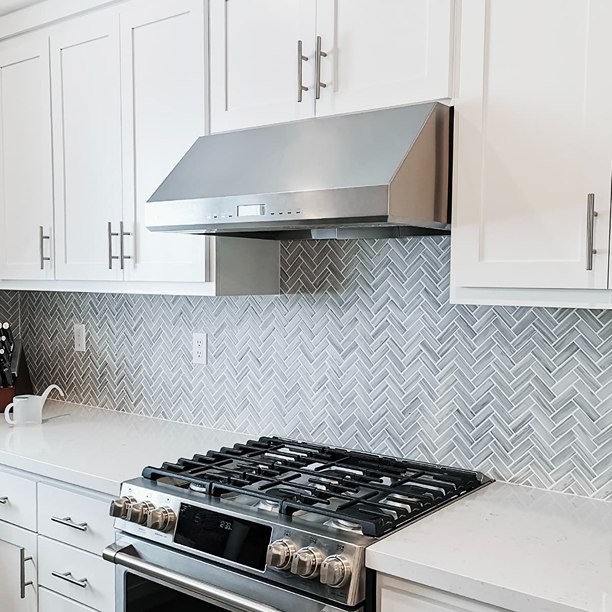
Range hoods consist of a canopy or hood enclosure that houses a fan or blower, filters, and sometimes lighting fixtures. The fan or blower creates airflow, capturing the airborne contaminants produced during cooking and expelling them outside the house or filtering them before recirculation the air back into the kitchen.
We have gathered some data to enhance your understanding of range hoods and their importance in the kitchen. These aspects are filled with excellent suggestions that cater to a wide range of styles, from maximalist to neutrals, and everything in between.
Whether you prefer a bold and vibrant look or a more understated and neutral design, we’ve got you covered. With these ideas, you can be confident that whatever style you ultimately select for your kitchen, it will surely be a winning choice. Here are 20 key aspects and components of range hoods
1. Functionality
Range hoods play a crucial role in maintaining a clean and odor-free kitchen by effectively removing smoke, steam, and cooking odors from the air. They also help to prevent the accumulation of grease and grime on surfaces.
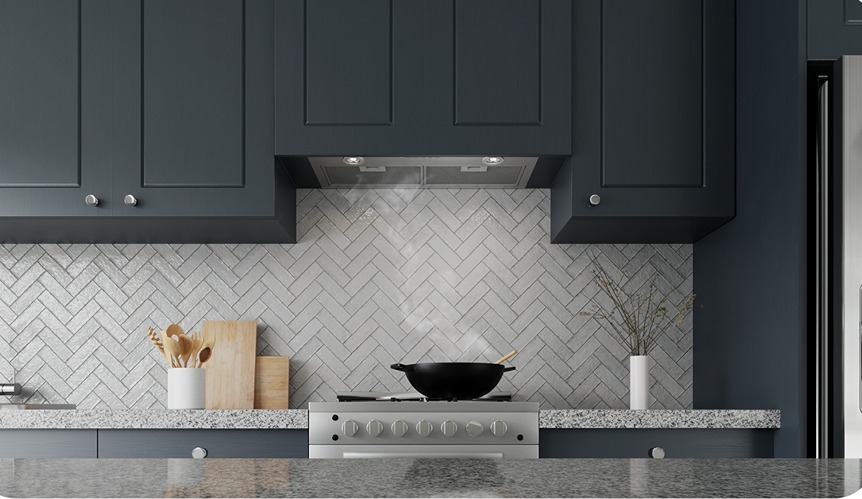
2. Styles and Designs of Range Hood
They are available in a wide variety of styles and designs to suit different kitchen aesthetics. You can choose from sleek stainless steel models for a modern look, decorative hoods with intricate designs for a traditional or vintage feel, or even minimalist options for a contemporary touch.
For example, in a kitchen, the combination of stainless steel range hoods with white cupboards and blue drawers adds a modern touch. Additionally, the presence of a gray geometric-shaped background enhances the lighting effect.
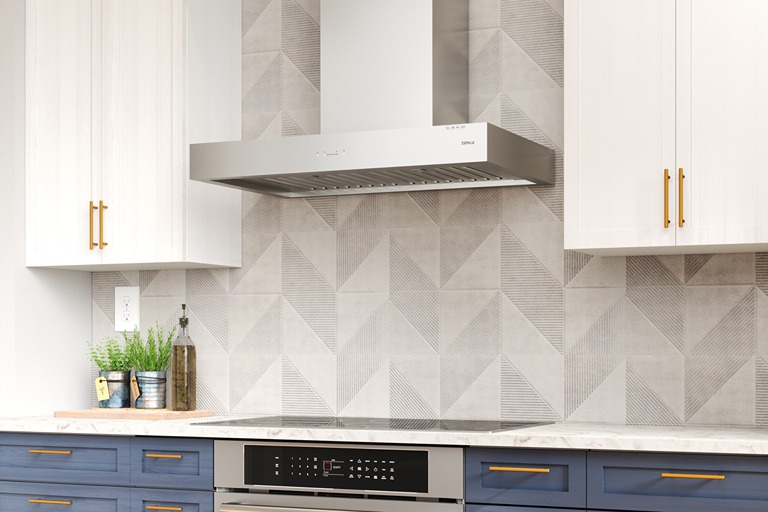
3. Ventilation Types
There are two main types of range hood ventilation systems: ducted and ductless. Ducted hoods vent the air outside the house through a duct system, while ductless hoods use filters to remove impurities before recirculating the air back into the kitchen.
An example of a gray ducted range hood can effectively vent the air outside the house, ensuring a fresh and odor-free kitchen environment. To complement this, a hexagonal backsplash in a shade of gray, cream, and white adds a visually appealing and stylish element to the overall kitchen design.
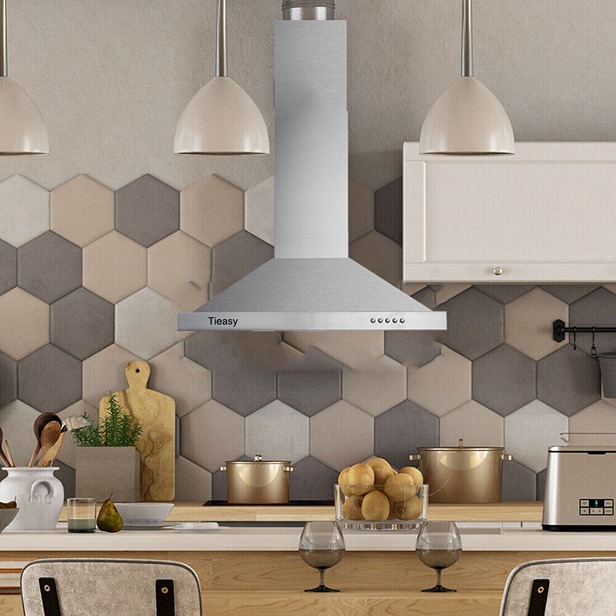
4. Size and Power
It’s essential to consider the size and power of the range hood to ensure it effectively captures and eliminates cooking fumes. The hood’s size should match the size of your cooking surface, and the power should be sufficient to handle the heat and smoke generated by your cooking appliances.
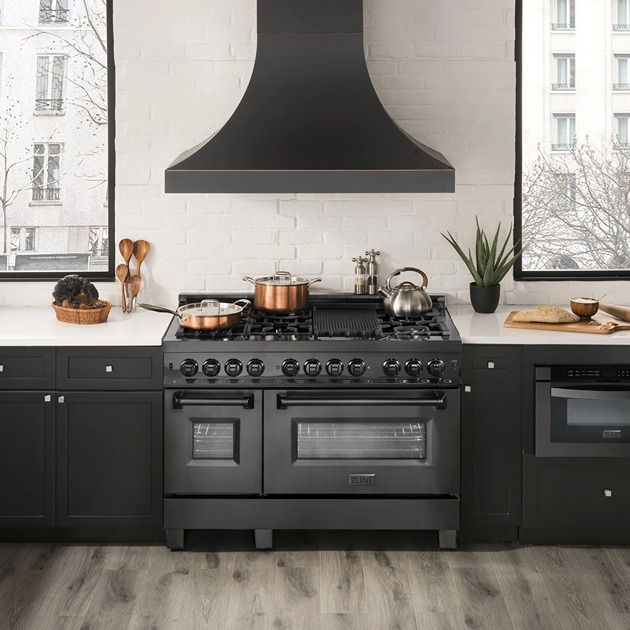
5. Noise Level
Some range hoods can be noisy, especially when operating at higher speeds. If noise is a concern for you, consider models that offer quieter operation, typically indicated by a lower sone rating.
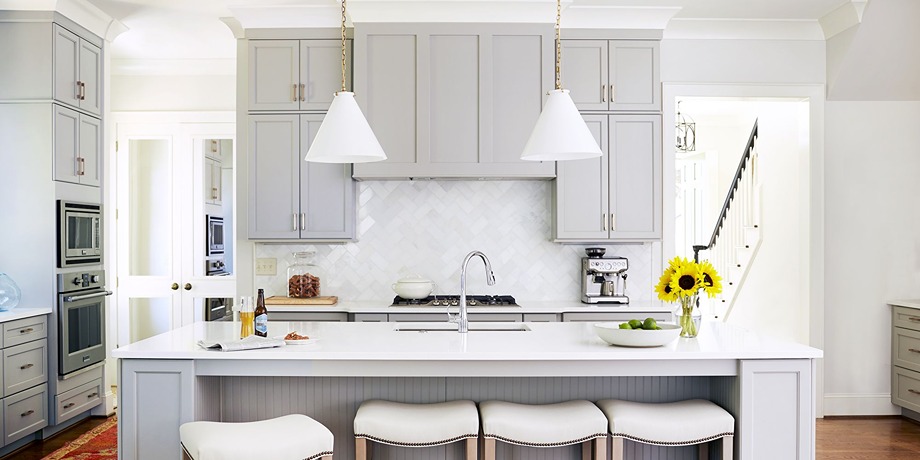
6. Lighting
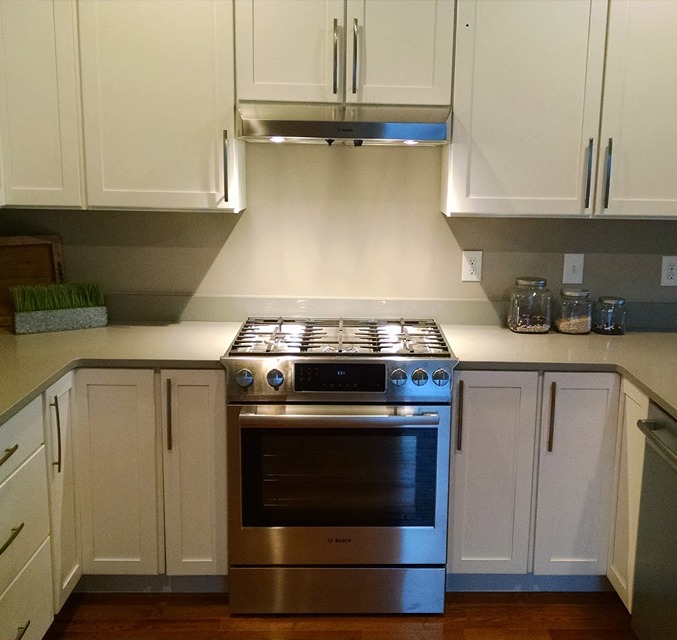
7. Energy Efficiency
Look for range hoods that are energy-efficient and have high-performance ratings. These models can help reduce energy consumption and save you money on utility bills in the long run.
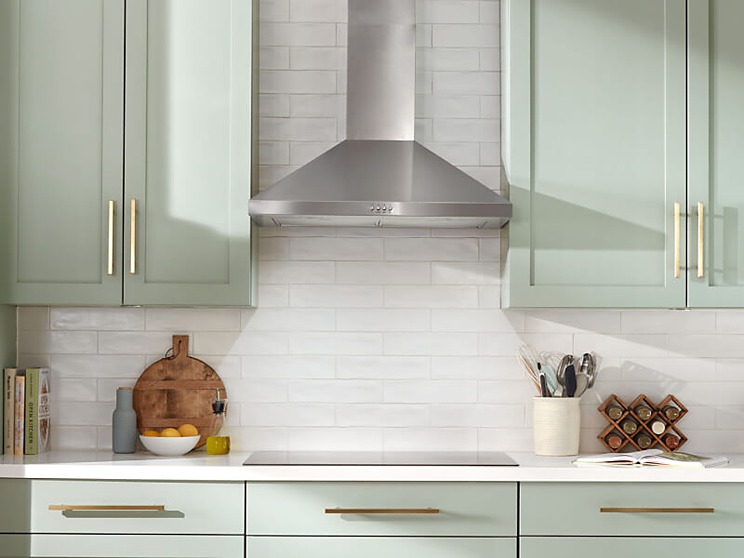
8. Maintenance and Cleaning
Consider the ease of cleaning and maintaining the range hood. Removable and dishwasher-safe filters and smooth surfaces make the cleaning process much more convenient.
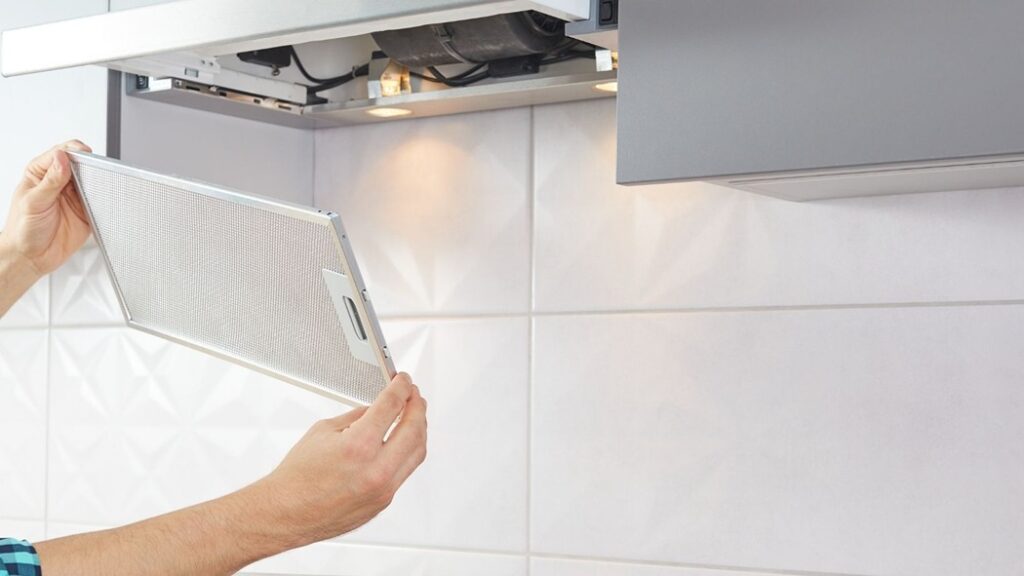
9. Extra Features
Some range hoods come with additional features such as adjustable fan speeds, timers, and auto-shutoff capabilities. These features can enhance the functionality and usability of the hood.
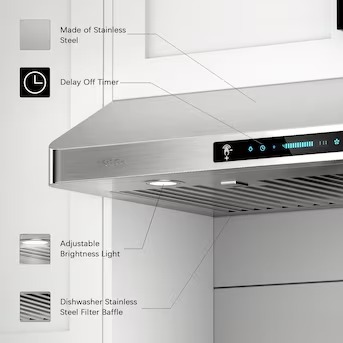
10. Professional Installation
It’s recommended to have your range hood professionally installed to ensure proper ventilation and safety. Hiring a licensed installer can help avoid any potential issues and ensure optimal performance.
11. Filter Types
Range hoods often include different types of filters to capture grease and airborne particles. Aluminum mesh filters are common and can be easily removed and cleaned. Charcoal filters are used in ductless hoods to remove odors, but they need to be replaced periodically.
12. Heat Sensors
Advanced range hoods may include heat sensors that automatically adjust the fan speed based on the temperature of the cooking surface. This feature helps maintain optimal air circulation and ventilation.
13. Smart Technology
Some modern range hoods offer smart features, allowing you to control and monitor them remotely using your smartphone or voice commands. These smart hoods can also integrate with other smart home devices for added convenience.
14. Heat Lamps
In addition to regular lighting, certain range hoods feature heat lamps that provide focused heat for keeping food warm while you prepare other dishes. This feature is particularly useful for entertaining or when you need to keep cooked food at the desired temperature.
15. Multi-Speed Fans
Range hoods with multiple fan speeds provide flexibility in adjusting the airflow and suction power according to your cooking needs. Lower speeds are suitable for light cooking, while higher speeds effectively handle heavy smoke and strong odors.
16. Backsplash Integration
Some range hoods are designed to seamlessly integrate with the kitchen’s backsplash, creating a cohesive and stylish look. These integrated hoods blend with the surrounding cabinetry, offering a more streamlined aesthetic.
17. Remote Control
Certain range hoods come with remote control capabilities, allowing you to adjust settings and operate the hood from a distance. This feature can be convenient when you’re busy cooking and don’t want to interrupt your workflow.
18. Auto-Clean Function
Advanced range hoods may feature an auto-clean function that uses high-speed fans or steam to remove and dissolve grease buildup inside the hood. This self-cleaning capability simplifies maintenance and keeps the hood operating efficiently.
19. Extended Chimneys
If you have high ceilings or an island cooktop, consider range hoods with extended chimneys to ensure effective ventilation. These chimneys can be adjusted to the desired height, maintaining proper airflow and capturing cooking fumes effectively.
20. Warranty and Customer Support
When purchasing a range hood, check for the warranty period offered by the manufacturer. Additionally, ensure that reliable customer support is available in case you encounter any issues or have questions regarding the installation or operation of the hood.


